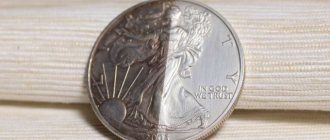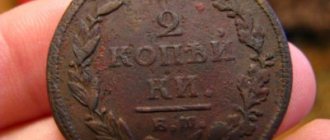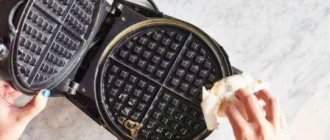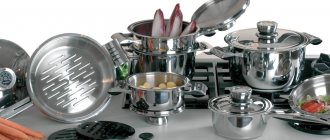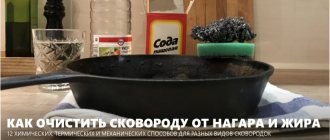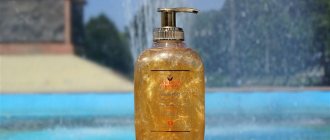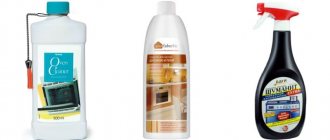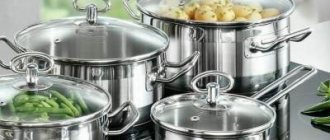Brass is a beautiful metal that attracts attention, but only if it is properly cared for. If you like brass products, it is important to care for them properly. Cleaning brass involves certain rules, if you break them you can say goodbye to your favorite item.
Quite often, cleaning brass at home involves creating an acidic environment, because it is the oxides that create unpleasant darkening on the surface. The most popular remedy in this case is oxalic acid, although some believe that any product with a chemical composition that contains acid is available for use.
If you find a detergent containing oxalic acid in your bins, then cleaning the brass item will be easy.
It is enough to lubricate the product with a thick layer and leave for a short period of time. Do not be alarmed that a dark coating will appear during the washing process. To remove it, a brush and running water are enough.
The most incredible way to get my hair back!
This is just a DISASTER ! And after all, my hair did not start falling out in one day, but systematically - day after day I watched how the hair left my head: while combing, washing, even while sleeping. (read more…)
After the product has been washed, cover it with a layer of soda, leaving it for a while, then rinse again under running water. Rub the item with a soft cloth until a characteristic shine appears.
Do you like guys with long hair?
Not really
If the pollution is “ingrained”, then it is better to prepare your own oxalic acid solution for work. For ten liters of water, 200 grams of acid are used. The contaminated product is placed in the acid solution. Do not forget about the possible darkening, which you should not be afraid of. Thanks to such a concentrated mixture, you can count on deep cleaning of the metal even from old stains. After the “bath”, send the product for washing, and then rub it properly.
Another chemical liquid ideal for working with brass is acetone. He is able to return it to its original appearance, and working with it is not difficult. It is enough to moisten a cotton swab in acetone and wipe the product until all stains are removed. This method of working is also relevant for copper products.
Preparing for cleaning
The preparatory process when cleaning brass from oxide at home allows you to avoid serious problems in the future. The features of this stage are the following:
- To begin with, it is recommended to determine whether the alloy consists only of brass, or whether the composition includes other materials. As a rule, a magnet is used for this, since it is attracted to such an alloy.
- Cleaning brass at home begins with assessing the cost of the product and determining its age. Experts do not recommend treating antique items at home, as patina accumulates on it. This layer protects the alloy from various negative factors. An exception is the case when brass loses its attractiveness due to its roughness.
- Before actually carrying out the work, you should wash the treated area from various contaminants using a regular detergent or soap solution. It is recommended to immerse a brass item for 20 minutes, after which mechanical treatment is carried out using a brush. In most cases, this is quite enough for high-quality preparation of the workpiece.
Brass before and after cleaning from oxide
After completing the preparation of brass for cleaning at home, you can begin to carry out such work directly.
For this purpose, a variety of substances and technologies can be used, all of them are characterized by their own specific characteristics.
What should you not use to remove rust stains and why?
To remove rust stains from plastic, you cannot use the following products:
Abrasives and hard sponges. Together with the dirt, they will remove the top layer of plastic. Its surface will lose its former smoothness and attractiveness.- Products containing chlorine. This substance will cause discoloration of the surface.
- Substances containing wax. This treatment will cause the plastic to become sticky and collect dust.
- Aggressive compounds with hydrochloric or other acid. Such substances will cause the plastic to dissolve.
- Solvents for paint and varnish coatings. Their application to a plastic surface will cause its damage.
Cleaning process
When considering how to clean brass at home, you need to take into account that the features of the procedure largely depend on the chosen technology and substances. Among the general features, we note the following points:
- The final result depends on the correctness of the preparatory stage. This is due to the fact that too large a layer of pollutants leads to a decrease in the effectiveness of the technique used.
- A product for cleaning brass at home can have very different recommendations for use, it all depends on the chemical composition and some other points.
- When processing antique substances, it is recommended to use safer methods. This is because the surface of antique brass items can be damaged.
Today, brass can be cleaned at home using a variety of cleaning agents. An example is oxalic acid and acetone. In addition, there are also traditional methods, many of them are safe and quite effective.
Oxalic acid
Often, various acids are purchased for the task in question, for example, oxalic acid. Such substances can have a highly aggressive effect on the alloy. When using oxalic acid, you can use two methods to eliminate the oxide:
- The brass is coated with acid and left in this state for 5 minutes. When a chemical reaction occurs, a black coating often appears, which is easily washed off with water and a brush.
- It is recommended to carry out work only when using protective equipment. This is due to the fact that oxalic acid can have a negative effect on the skin.
- The surface should be cleaned carefully, since strong mechanical impact will damage such an alloy.
A wide variety of products can be treated with acid. After cleaning at home, you should rinse the product with running water.
You can find two versions of oxalic acid on sale:
- Special gel with added acid. This design option is ideal for cleaning stains at home, but not long-term stains. An interesting fact is that oxalic acid is included in a wide variety of detergents, as it copes well with various contaminants. After cleaning with the gel at home, it is recommended to apply baking soda to the surface, then rinse off all components with clean water. The good thing about the gel is that it is easy enough to apply to the surface and distribute evenly.
- Pure oxalic acid is also commercially available. Recommendations for dilution are as follows: per liter of liquid there are about 20 grams of the composition. The product is soaked in the resulting solution, after which the brass is cleaned with a brush. Work should be carried out exclusively with gloves and a respirator, since acid has a negative effect on human health.
Oxalic Acid Cleaner
Unlike acetic or citric acid, this one cannot have a negative effect on brass.
Acetone
Among the most common effective means that can clean brass is acetone. A similar substance is sold in a variety of specialized stores. Among the features of cleaning with acetone at home, the following points can be noted:
- To begin with, the brass is thoroughly wiped with a swab to remove contaminants, after which it is moistened with acetone and the procedure is repeated.
- If the product is heavily soiled, the brass is treated in a solution of water, salt and vinegar. You can increase the efficiency of the process by bringing the solution to a boil.
- Boiling is carried out for 3-4 hours. If necessary, water is added to the selected container from time to time as it boils away.
Cleaning brass with acetone
When working with acetone, you need to be careful, as this substance should not come into contact with exposed skin or eyes.
Toothpaste
You can clean brass at home using a toothbrush and toothpaste. Recommendations for carrying out such a procedure are as follows:
- To soften old stains, wash the surface with soapy water. In some cases, the product is soaked for several hours.
- Toothpaste should be applied to problem areas. After this, the stains are wiped off sequentially.
- When using a toothbrush, even hard-to-reach areas are treated. In addition, a soft cloth is used.
Using toothpaste can scrub off fairly caustic stains. At the same time, the cost of the procedure is quite low, since toothpaste is inexpensive.
Acetic and citric acid
Among the traditional methods, the use of vinegar and citric acid should be noted. Both cleaning agents are highly effective in cleaning oxide from brass at home if you follow basic recommendations. Vinegar is used taking into account the recommendations below:
- The vinegar mixture is made by combining flour, water and table vinegar. The recommended concentration is 9%.
- All components are mixed together to obtain a homogeneous mixture. After this, all brass is coated.
- It takes some time for the applied composition to dry. Vinegar eats away even large stains. Flour is added to the composition as an absorbent reagent.
After the applied composition has dried, you can begin to remove it. You can use a soft cloth for this. If not all stains have been removed, the procedure can be repeated.
When considering how to clean brass at home, you should pay attention to citric acid, which is mixed with salt. A brass object is coated with a similar composition, after which the brass is washed.
Sandpaper
In some cases, due to severe contamination, it is necessary to use sandpaper. It is made using abrasives of various grain sizes. It is recommended to treat a contaminated brass item with the finest grain sandpaper. Among the features of cleaning with such material at home, we note the following points:
- Too much grit will cause scratches. That is why you should carefully select consumables.
- The desired result can only be achieved by moving the skin frequently. To do this, use a variety of devices designed for grinding brass and other similar alloys.
- In some cases, to increase the effectiveness of the procedure, special pastes are added, which can be purchased in a specialized store.
Sanding block
You can clean caustic and large stains with sandpaper at home. Mechanical processing increases cleaning efficiency.
Soap solution
A solution consisting of water and soap can be used on a wide variety of brass products. The recommendations are as follows:
- The water is heating up.
- The soap concentration should be quite high. As a rule, laundry soap is added to the water, but other cleaning products can be used.
- It is recommended to keep brass in such a solution for no more than ten minutes. This recommendation is due to the fact that warm water heats the alloy, and after cooling the varnish peels off. Applying protective varnish to brass yourself is quite difficult.
- Brass should be washed using a soft cloth and napkin. Abrasive materials should be used carefully as they may cause deep scratches.
Preparation of soap solution
When cleaning in soapy water, you need to treat even hard-to-reach places, for which you use a brush. It allows you to process hard-to-reach places. It is recommended to choose a version with soft bristles that will not lead to the formation of defects. The final stage, as a rule, consists of polishing, for which special cleaning agents and rags are used.
Salt
Often, salt is used during the procedure in question as an additional ingredient in the preparation of a mixture for cleaning brass plaque at home. An example is mixing vinegar and table salt. In this case, the procedure has the following features:
- The product is washed with clean water and then wiped dry.
- Salt and vinegar are mixed together, after which flour is added.
- The mixture must be homogeneous, otherwise the effectiveness of the mixture is significantly reduced.
- The substance is evenly distributed and rubbed with a soft cloth.
- The cleaning agent should remain on the product for several hours.
After keeping the brass for the required amount of time, you need to wash off the composition from the surface. If the stains were not removed the first time, the procedure can be repeated. Vinegar and salt have been used to remove plaque for a long time due to their high efficiency.
Specialized means
You can find special cleaning products on store shelves. They are characterized by high efficiency of application. Among the recommendations for the use of special polishes, we note the following points:
- Cleaning of oxide at home should only be carried out using personal protective equipment. This is due to the fact that such substances are highly aggressive and can cause a burn if they come into contact with the skin.
- More attention needs to be paid to choosing the most suitable product. This is because the wrong chemical will damage the brass and the item will be ruined.
Various cleaning methods and products should only be used in accordance with the manufacturer's recommendations. The most common cleaning agents are “Delhi” and “Metalin”. They contain up to 20% acid, which allows for high-quality cleaning.
Trilon-B
Among the recommendations for the use of Trilon-B, the following points can be noted:
- A special product is purchased and mixed with water in a ratio of 1:10.
- A small product is placed in the prepared solution and kept for a long period (selected depending on the degree of contamination).
- After soaking the brass in a special solution, it is washed under waste water and cleaned with a cloth.
Often, the product in question is used to clean coins and other small items. In addition, ammonia can be used. Among the recommendations for its use we note:
- Ammonia is poured into a special container.
- The product being processed is completely immersed in alcohol and then kept in it for some time.
- You need to work with ammonia using tweezers; contact with skin or textiles is not allowed.
- After keeping the product in the solution for a long period, you can remove it and rinse it with running water.
After drying there should be no residue. In addition, after using a bath of ammonia, you can carry out mechanical cleaning using special materials intended for polishing. At this stage of the work you should be careful, as careless actions can lead to scratches.
Paste GOI
In some cases, GOI paste can be used. It is not of great value, but is easy to use at home. In the manufacture of such a paste, chromium oxide is used, which can have an effect on various pollutants.
The paste must be used according to the manufacturer's instructions, since failure to follow the operating instructions can damage the brass surface.
How to age brass at home
Patination is a technique for “aging” the surface of metal or wood, which is achieved by applying dyes based on various acids. As a result, the products acquire a special charm and the spirit of antiquity.
Before carrying out manipulations, working surfaces are put in order, then treated with a special primer from a spray can, which allows the paint to better adhere to the surface.
Patination of metal requires time and patience; we will look further at how to apply patina paint to the surface and what effect can be achieved.
Ways to give copper products an antique look
Over time, copper items lose their color and begin to take on a dark or green tint. This happens naturally during the process of oxidation, but modern designers actively promote vintage interior elements; it looks beautiful, sophisticated, and expensive.
Antique copper bowl
But to achieve a beautiful shade of patina, you don’t have to wait several years; you can age the product artificially. There are many ways to do this. You can choose any one that suits you best.
Basic Tools
The use of various aging methods involves the use of some tools or improvised means. But there are universal items that are used with any method:
Patination is the artificial aging of copper interior items
- the product itself, carefully processed;
- thick rubber gloves;
- safety glasses for eye safety;
- aging agent (vinegar, ammonia, prepared solutions, acetone, ammonia);
- soap or just water for cleaning;
- magnet for checking the composition;
- hot treatment (hair dryer or any other heating agent);
- brush;
- special container (bucket, tin cans, plastic jars);
- means for polishing and grinding (sponge, cloth).
Using ammonia
Before starting work, you need to process the copper item with a file (a special file for jewelry work) - such preparation helps to clean the item from dirt and put it in order. To treat with ammonia you will need: the treatment agent itself, any container with a tight-fitting lid, a cotton pad and a lid the size of it.
Table of brands of copper products of a famous antique brand
The cotton pad should be placed in a small lid, thoroughly soaked in ammonia and placed together with the copper product in an airtight container. After 10 minutes you can see how the copper item has aged. When opening the container, do not forget that you can smell a strong smell of alcohol, so it is better to use a protective bandage.
Using Vinegar
In order to age a copper item with vinegar, you need to carefully prepare it. The preparation process consists of several stages:
You can age copper in vinegar
- If the copper product is covered with a layer of varnish, then it must be removed. To do this, you need to either hold the product in a container with acetone, or carefully treat it with a brush with the same product;
- Next, the copper item needs to be poured with hot water and rinsed so that the varnish comes off completely;
- if the copper item does not have any additional coating, then it will be enough to simply wash it with soap;
- The aging process cannot be started if the product is not dry enough. To speed up drying, you can use a hair dryer, but before doing this, make sure that there are no traces of protective coating left on the copper, otherwise the copper product may catch fire.
After the preparatory stage is completed, you can begin processing with vinegar. The big advantage of this method is that you do not need to work with harmful substances and you always have vinegar on hand in the kitchen.
As with acetone, you can either dip the item in vinegar or apply it to a brush and thoroughly treat the item. Also, if you need to get a green patina, you can add a spoonful of salt to the vinegar. After the desired result is achieved, the copper item should be rinsed in warm water and gently dried with a towel.
Aging with a gray tint using sulfur liver
First you need to prepare sulfur liver. This can be done as follows:
Liver sulfur (sodium polysulfide)
- mix sulfur powder and potash in a 1:1 ratio in a tin jar, put the mixture on fire;
- after the mixture begins to melt and darken, the sintering process begins;
- After 15 minutes, remove the tin from the heat and let the mixture cool slightly.
Now you can begin preparing the solution in order to begin patination and age the copper item. Mix 3 g of salt and 3 g of cooled sulfur liver in 1 liter of water. Mix the solution thoroughly and dip the copper product into it. When the copper has acquired the required gray tint, you can remove the product, then rinse with water and dry.
Removing varnish
In some cases, damage to the varnish causes the material underneath to become darker and lose its color. It is removed in a variety of ways, the choice is made depending on the characteristics of the alloy. You can remove the topcoat as follows:
- The varnish is removed with hot water. When the surface is exposed to high temperatures, the metal begins to expand; after cooling, the varnish comes off.
- The product to be treated can be placed in boiling water, but for no more than 3 minutes.
- If home methods do not help with removing varnish, it is recommended to purchase special solvents. They are found on sale in special stores.
- If the varnish layer is too thick, remove it with an abrasive material. The movement should be made in one direction and without strong pressure. This recommendation is due to the fact that too much mechanical stress can lead to deep scratches.
After removing the varnish, the brass is cleaned of plaque and dirt. For this, various special means and folk methods can be used.
How to Aging Brass with Vinegar - Metallover's Guide
Patination is a technique for “aging” the surface of metal or wood, which is achieved by applying dyes based on various acids. As a result, the products acquire a special charm and the spirit of antiquity.
Before carrying out manipulations, working surfaces are put in order, then treated with a special primer from a spray can, which allows the paint to better adhere to the surface.
Patination of metal requires time and patience; we will look further at how to apply patina paint to the surface and what effect can be achieved.
What you need for work
The very meaning of the word “patina” has nothing to do with the dyeing process. It is of Italian origin and refers to the film that forms on metal after prolonged interaction with oxygen.
Initially, you had to wait a long time for the metal to oxidize itself, and the result was completely unpredictable; now this technique can be reproduced at home with your own hands using the following materials:
- patina of the color you like (in powder);
- liquid solvent;
- brush (size 2-3) or sponge;
- small plastic or glass trays (do not take metal ones, they can interact with the paint);
- metal product that you want to decorate.
Pay attention to safety precautions! Patination products involve working with chemical oxidizing agents, solvents and require special care.
It is recommended not to work in confined spaces without respiratory protection. It is better to work in the fresh air, in rooms with good ventilation (with open windows, an exhaust fan on, a draft).
If acid gets on the surface of the skin, immediately rinse under running water and then apply a paste of baking soda.
If rashes, burns or any skin changes occur, consult a doctor immediately!
Protect your hands! Always patina with gloves.
Patination colors
On different metal surfaces, completely different color schemes can be achieved by patination. The most common patina color is greenish, which is produced by the oxidation of copper. On other metal surfaces, the resulting shade may be completely different:
- Rich yellow or ocher color on steel surfaces.
- Chocolate brown on brass and bronze items.
- Dark gray on silver items.
The choice of dry patina for metal work is quite varied. Powder is sold in almost every hardware store. Most common colors:
- aged silver;
- natural or oxidized copper;
- red gold.
Brighter radical colors are also available, for example, blue, lilac, red, allowing you to achieve an original effect on the surface of various metals.
Surface preparation
Decorative application of patina requires careful preparation of the surface being treated; the metal must be perfectly smooth. There should be no signs of corrosion on it; it will not allow the surface to be well primed; the top layers will quickly bubble and peel off.
All burrs must be removed, chips and potholes must be filled and sanded with sandpaper (first coarse, then finer).
The prepared product is coated with a special primer (most conveniently, from a spray can), and then metal patina paint is applied to it.
Please note that the patina effect looks best on items painted with dark, especially black paint. The painted product must dry well, otherwise the patina will not adhere well and you will not achieve the desired effect.
Patina paint application technique
There are two ways to age metal: applying patina with a brush or sponge. By placing dissolved paint on the tip of a brush, you can achieve completely different textures, directional strokes and different depths of paint. Do not wet the brush before starting work; it must be dry; a wet brush will cause smudges and drops on the metal being processed.
Do not take a brush that is too large or small - the optimal bristle size is 2-3 cm. The sponge gives a “dusty” effect, but do not press it too hard, otherwise pores will be imprinted on the surface being treated.
Keep a napkin with solvent and some of the base paint with which the product is painted at the ready. Working with the patina should be virtually error-free. Repeatedly applying patina to metal in the same place gives an unsightly “flat” effect. When painting individual elements, be careful: if you accidentally “smeared” something nearby, simply paint over this area with background paint.
How to clean severe darkening?
Severe darkening can be cleaned using a variety of materials. The combination of lemon juice and a pinch of boiled salt is highly effective. Among the features of this method, we note the following points:
- Before cleaning, the surface is washed with clean water and then wiped with a dry cloth.
- If the surface layer is varnish, you will have to remove it. This is due to the fact that during long-term use of brass, plaque can form under the varnish.
- After preparing the product, you can begin cleaning. Lemon juice is mixed with table salt, thereby increasing the effectiveness of the resulting mixture.
Polished brass
A surface can only be cleaned until it shines using a combination of several methods. An example is that after applying the mixture, the surface is cleaned and treated with soft sandpaper. It is not recommended to use an abrasive that is too coarse, as this leads to deep scratches.
What should you not do during the procedure?
Recommendations for processing a brass product are related to its purpose. An example is the following points:
- Costume jewelry, figurines, and other decorations should not be treated with abrasive material. This is due to the fact that a fairly large number of scratches appear on the surface, which are difficult to get rid of.
- It is worth considering that citric acid is highly effective, but can seriously damage the treated coating. That is why such a substance is used taking into account all precautions.
- Brass is susceptible to scratches. That is why you need to be careful when carrying out work.
Result of careless cleaning
In addition, when using special cleaning products, you must follow the operating instructions. Some substances are highly aggressive.
Precautionary measures
When carrying out the work in question, it is recommended to pay attention to several recommendations. Let's call the main ones:
- A waterproof film is placed in the treatment area.
- When working you need to use special clothing.
- It is recommended to carry out cleaning with gloves. This is due not only to the fact that the substance can have a negative effect on the skin, but nails can cause scratches.
- It is necessary to carefully study the scope of application of the chosen product, whether it is recommended to use it in a particular case.
- It is recommended that before starting work, you determine what substances are included in the alloy. If the brass contains impurities, the cleaning procedure may be slightly different.
Experts do not recommend cleaning old items. Restoration should be carried out exclusively by a professional, since if a mistake is made, the surface may be damaged.
Security measures
When carrying out patination, it is necessary to observe safety precautions. After all, many of the substances used are very toxic and can be harmful to health. Therefore, it is important to follow the following rules:
- Use a specially equipped cabinet for work that has a hood.
- During the procedure, wear a protective suit, gloves, and goggles.
- Avoid contact of used reagents with skin and eyes.
- All containers must be clean for use. Do not use the same uncleaned glassware for multiple experiments.
- When heating test tubes with reagents, the containers must be held so that their necks point away from you.
- All experiments must be carried out above the table.
- Do not leave reagent bottles open as they may tip over.
- All reagents must be labeled to avoid confusion.
- There should be sand in the office to be used in case of fire.
Thus, you can carry out patination yourself. But at the same time you need to act very carefully, observing safety precautions.
What to do if there is no result?
If, after cleaning with improvised materials, the result does not live up to expectations, then you can remove the coating and reapply the brass. The procedure is carried out taking into account the following recommendations:
- To begin with, prepare the place where the work will be carried out. To do this, the base is covered with film.
- The surface layer is removed using a special liquid. It is worth considering that such liquids can be easily flammable.
- The second step is to polish the brass. To do this, a special polish must be used, which is rubbed into the surface. Polishing can be carried out after cleaning using various materials.
- After this, the surface is varnished. The substance should be applied evenly; a brush or cotton swabs can be used for this.
After completing the previous operation, the surface is wiped with almost any cloth. In order to eliminate the possibility of fingerprints appearing on the surface, work should be carried out with cotton gloves. By infrequently wiping the surface and removing dust, you can eliminate the possibility of rapid plaque formation.
In conclusion, we note that each case is unique in its own way. That is why you need to carefully select the most suitable cleaning method.
For example, products with complex shapes are often treated with a brush; in some cases, the use of acid is prohibited, as it can damage the brass.
